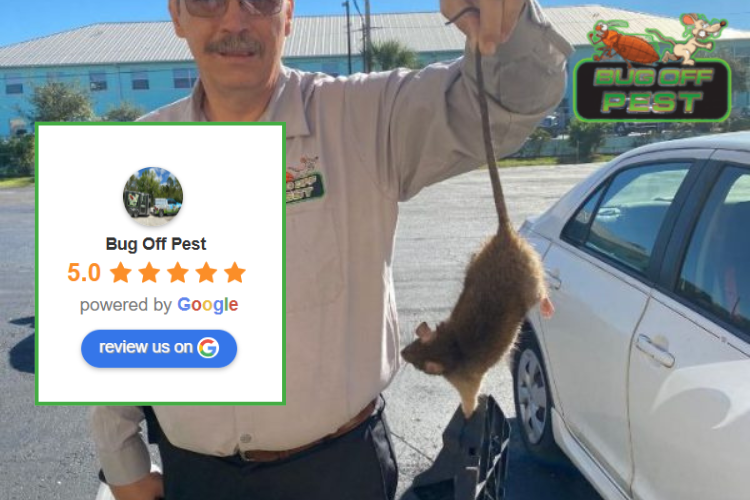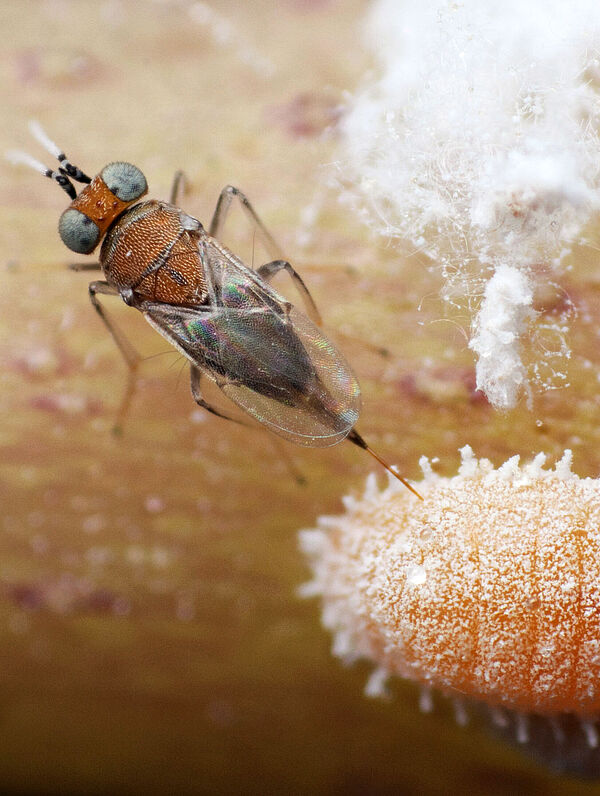Expert Rodent Control Port Charlotte to Prevent Damage to Your Property
Discover the Most Recent Advancements in Pest Control and Just How to Apply Efficient Therapy Solutions
In recent years, the area of bug control has actually seen considerable innovations, driven by the need for efficient and lasting therapy options. Cutting-edge techniques such as Integrated Insect Administration (IPM) integrate green practices with advanced technology, improving both effectiveness and environmental duty.
Eco-Friendly Insect Control Options
Recently, the demand for environment-friendly parasite control choices has surged as property owners and organizations alike seek sustainable options to standard chemical therapies. This shift is driven by expanding environmental recognition and a desire to lessen the health and wellness dangers connected with synthetic chemicals.

Environment-friendly insect control methods incorporate a series of approaches that prioritize the usage of natural substances and practices. Integrated Insect Administration (IPM) is one such strategy, integrating organic, social, and mechanical strategies to manage bug populations while decreasing reliance on chemicals (Wildlife removal services). This alternative technique highlights prevention through environment manipulation and the intro of natural killers, consequently cultivating a balanced ecosystem
Another preferred option is using agricultural chemicals acquired from plants, which often tend to be much less dangerous to non-target organisms. Products like neem oil and diatomaceous planet have actually gotten grip for their performance in managing pests while posing very little threats to human wellness and the atmosphere.
In addition, exemption techniques, such as sealing access points and maintaining sanitation, play an essential role in environment-friendly bug monitoring. By taking on these sustainable techniques, services and individuals can efficiently take care of insects while promoting a much healthier planet for future generations.
Smart Modern Technology in Parasite Monitoring
Innovation is improving the landscape of bug management, with smart innovation becoming an essential pressure in boosting performance and efficiency - Wildlife removal services. The integration of Net of Points (IoT) tools, fabricated intelligence (AI), and data analytics is reinventing how insect control specialists approach problems
Smart traps equipped with sensors can find insect activity in real-time, sending out instant alerts to drivers. This enables timely actions, reducing damage and decreasing the need for substantial treatments. Additionally, AI algorithms evaluate historical data to predict bug actions, enabling proactive interventions based upon ecological problems and problem patterns.
Drones and computerized lorries are additionally playing a considerable role in pest monitoring, supplying airborne evaluations of large areas, determining hotspots, and also dispersing targeted therapies. These innovations not only improve procedures but additionally improve safety and security by limiting human exposure to potentially hazardous chemicals.
Moreover, mobile applications encourage consumers to keep track of insect activity and access professional guidance, promoting a joint strategy to pest administration. In general, the fostering of smart technology is establishing a new standard in pest control, stressing data-driven decisions and sustainable practices that inevitably profit both professionals and homeowners alike.
Integrated Pest Monitoring Techniques
Integrated Insect Monitoring (IPM) uses an all natural method to pest control, incorporating different approaches to properly handle parasite populations while lessening risks to human health and the atmosphere. IPM focuses on recognizing the pest life process, their natural opponents, and the ecological community in which they grow.
One of the essential components of IPM is keeping an eye on pest populaces via regular assessments and information collection. This enables the recognition of insect limits, figuring out when intervention is necessary. Social methods, such as plant habitat, turning, and sanitation control, are essential in lowering pest occurrence and promoting plant health look at this web-site and wellness.
Mechanical controls, including traps and barriers, are additionally vital in IPM. These approaches can literally remove or discourage parasites without making use of chemicals. When essential, the sensible application of chemical controls is utilized, concentrating on targeted therapies that decrease environmental influence.
Education and learning and partnership among stakeholders, including farmers, parasite control experts, and the area, are important for the successful application of IPM techniques. By prioritizing sustainable practices, IPM not only addresses pest concerns yet also fosters a much healthier environment.
Biological Control Approaches
Countless biological control techniques are progressively acknowledged for their efficiency in handling bug populations while promoting ecological balance. These approaches harness natural killers, bloodsuckers, and virus to minimize pest numbers without counting on synthetic chemicals. For circumstances, the introduction of ladybugs can effectively regulate aphid populaces, while nematodes target soil-dwelling pest larvae.
Additionally, the use of microbial pesticides, such as Bacillus thuringiensis (Bt), provides an eco friendly option for handling caterpillar insects. These items particularly target pest types, lessening harm to advantageous pests and pollinators. Preservation biological control highlights enhancing habitats for natural enemies, such as birds and helpful pests, thus motivating their visibility in agricultural systems.
Research continues to disclose cutting-edge approaches within this field, such as making use of pheromones to interfere with pest breeding patterns or the growth of biocontrol agents with hereditary design. Implementing these techniques can result in lasting parasite administration techniques that minimize the reliance on chemical treatments, ultimately fostering much healthier communities. As recognition of these methods expands, they are ending up being important elements of integrated insect monitoring (IPM) methods, providing an equilibrium between efficient pest control and environmental stewardship.
DIY Parasite Control Solutions
As property owners look for effective means to take on pest problems, DIY pest control solutions have actually acquired appeal for their ease of access and cost-effectiveness. These techniques empower individuals to resolve invasions making use of readily offered products and techniques, commonly without the need for expert treatment.

In addition, preserving proper cleanliness and routine inspections can avoid parasite access and nesting (Wildlife removal services). Easy methods, such as securing splits, eliminating food resources, and decluttering, can significantly diminish insect populations. Catches, both homemade and readily readily available, can additionally offer reliable services for monitoring and controlling specific insects like rodents or insects

Conclusion
The integration of environmentally friendly bug control alternatives, smart modern technology, and innovative administration methods provides a detailed strategy to efficient parasite management. By embracing Integrated Pest Administration why not try here (IPM) and utilizing biological control methods, along with do it yourself options, liable and sustainable parasite control can be attained. These improvements not only improve their website the efficiency of pest monitoring methods yet likewise add to a much healthier environment. Applying these approaches cultivates a balanced environment while successfully attending to pest populaces.
Eco-friendly insect control approaches include a variety of techniques that prioritize the usage of all-natural materials and practices. Integrated Insect Administration (IPM) is one such method, combining organic, cultural, and mechanical strategies to take care of bug populations while minimizing dependence on chemicals. As recognition of these techniques grows, they are becoming integral components of integrated pest administration (IPM) strategies, supplying an equilibrium between efficient insect control and ecological stewardship.
The assimilation of eco-friendly parasite control options, wise modern technology, and ingenious monitoring methods presents an extensive approach to efficient parasite monitoring. By welcoming Integrated Insect Monitoring (IPM) and utilizing organic control methods, along with DIY solutions, liable and sustainable insect control can be accomplished.